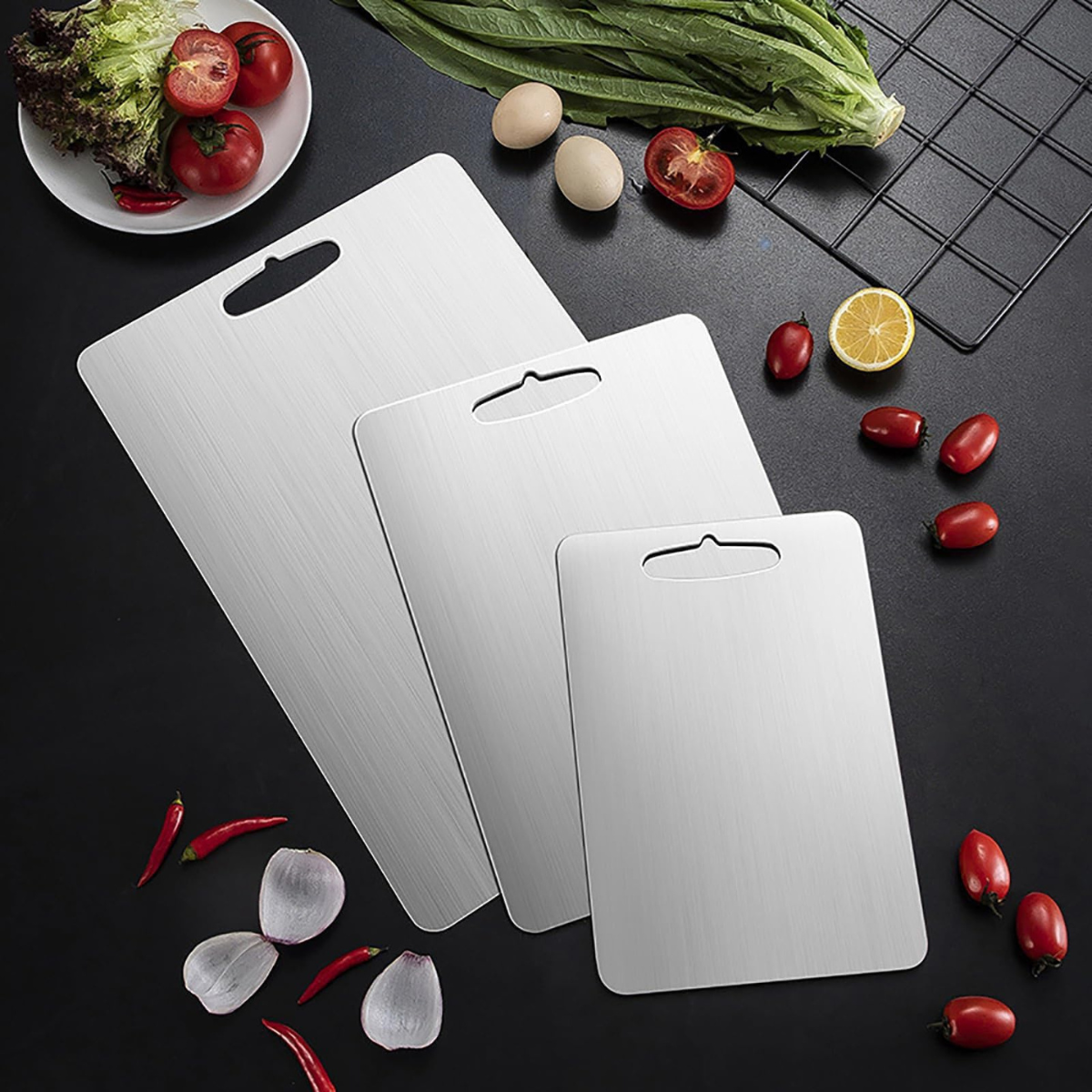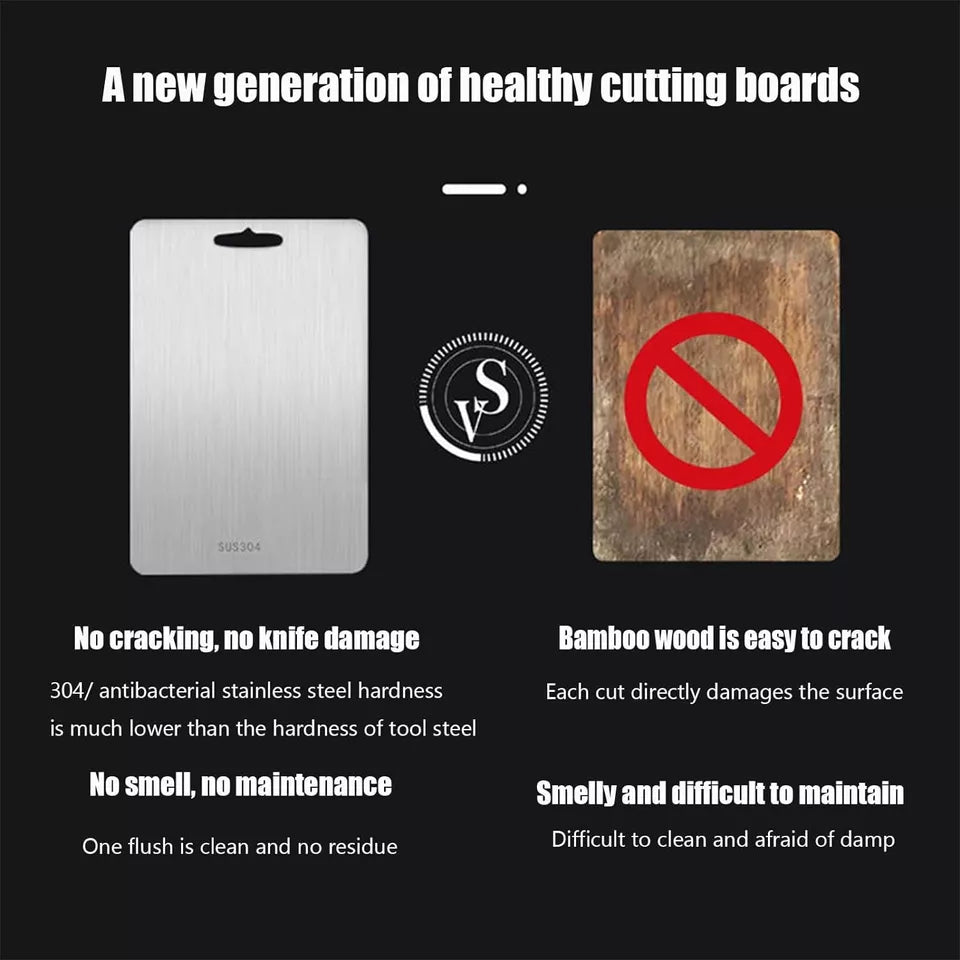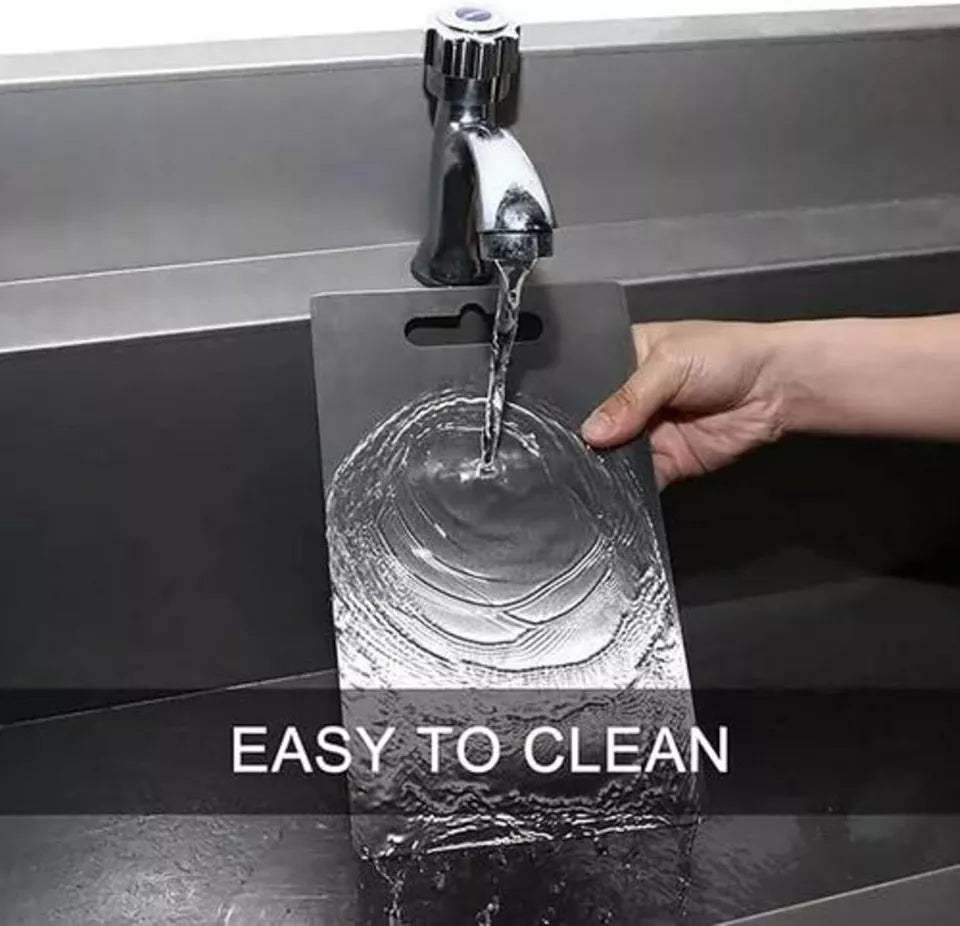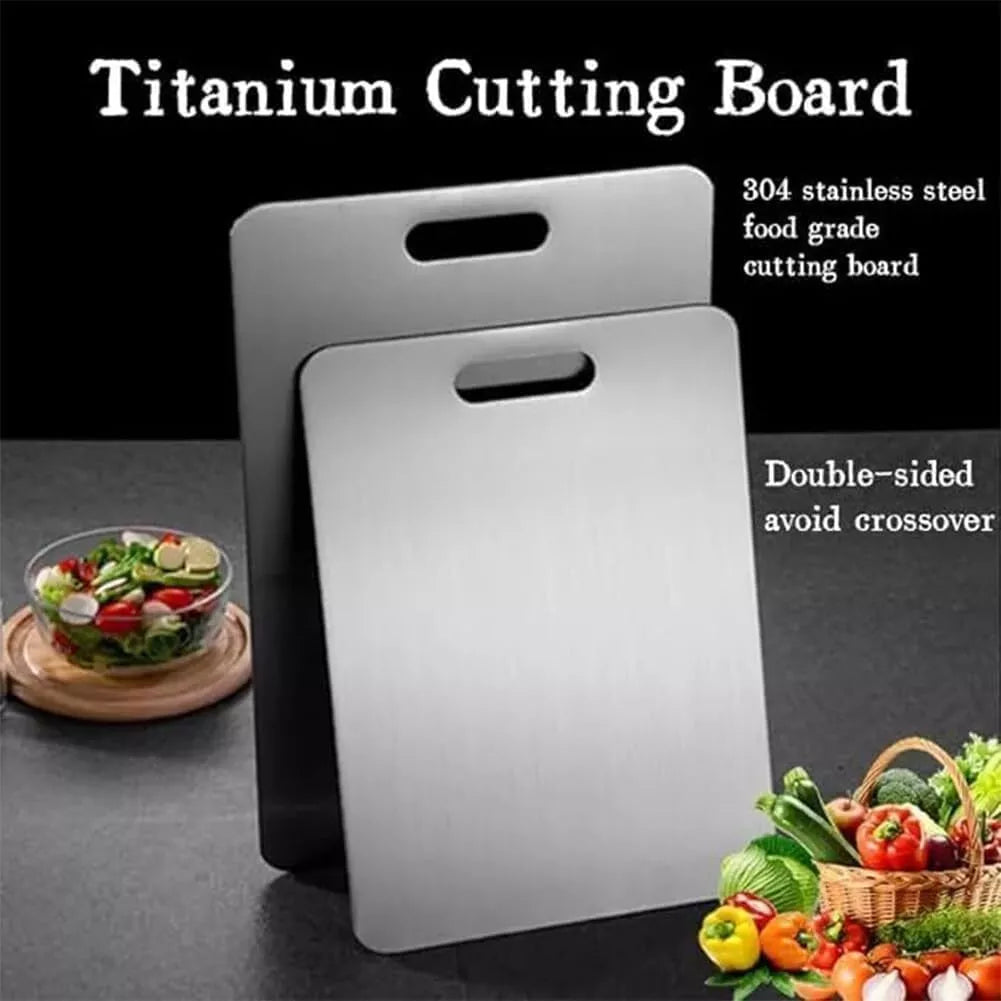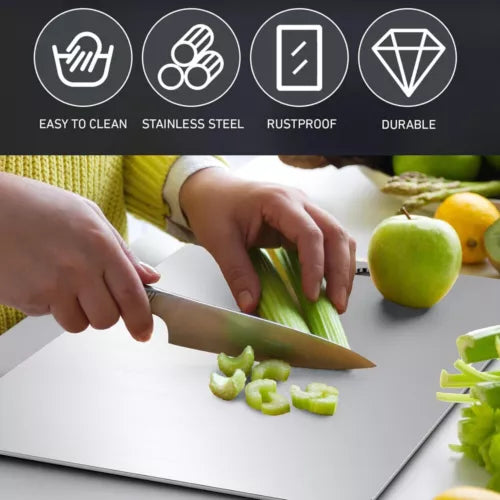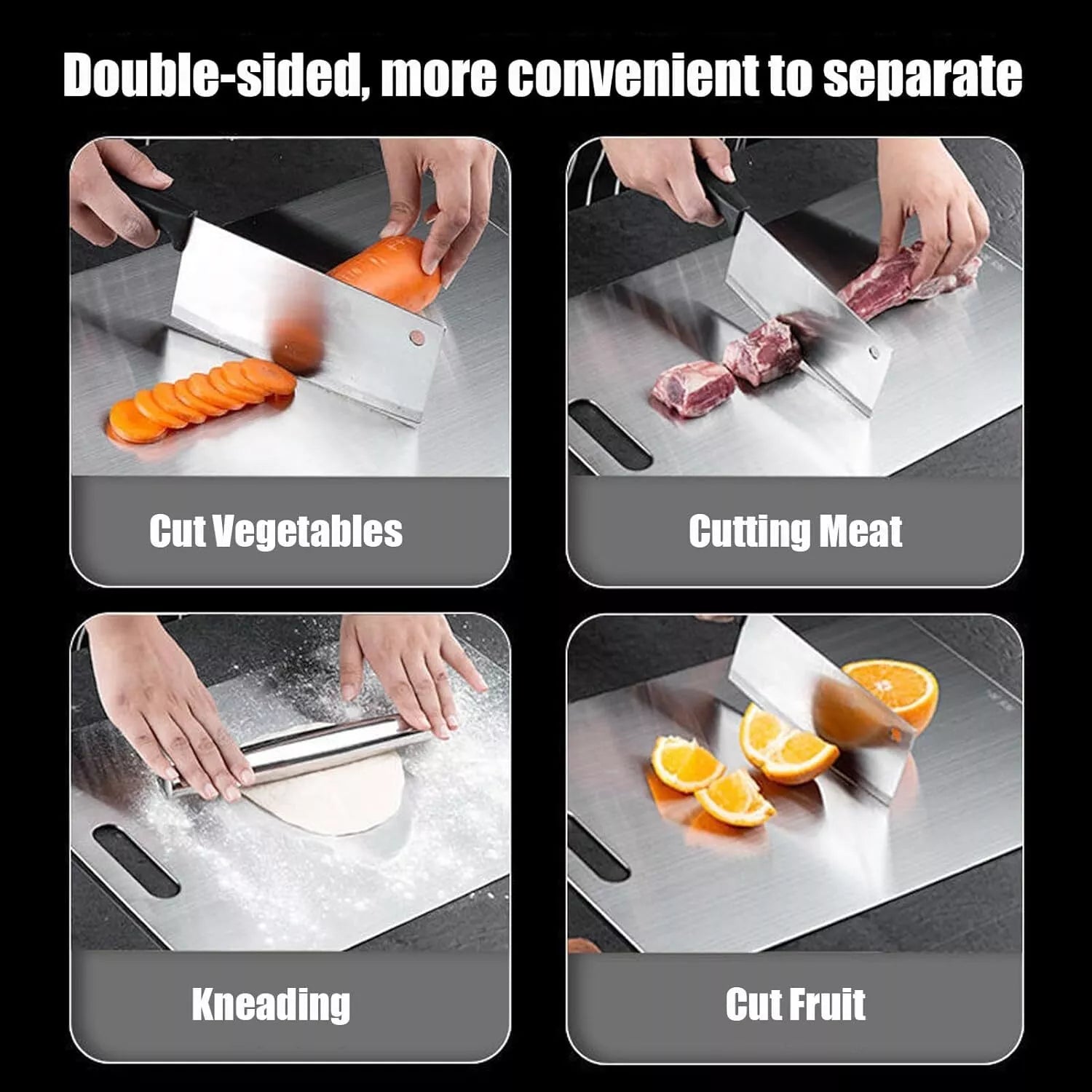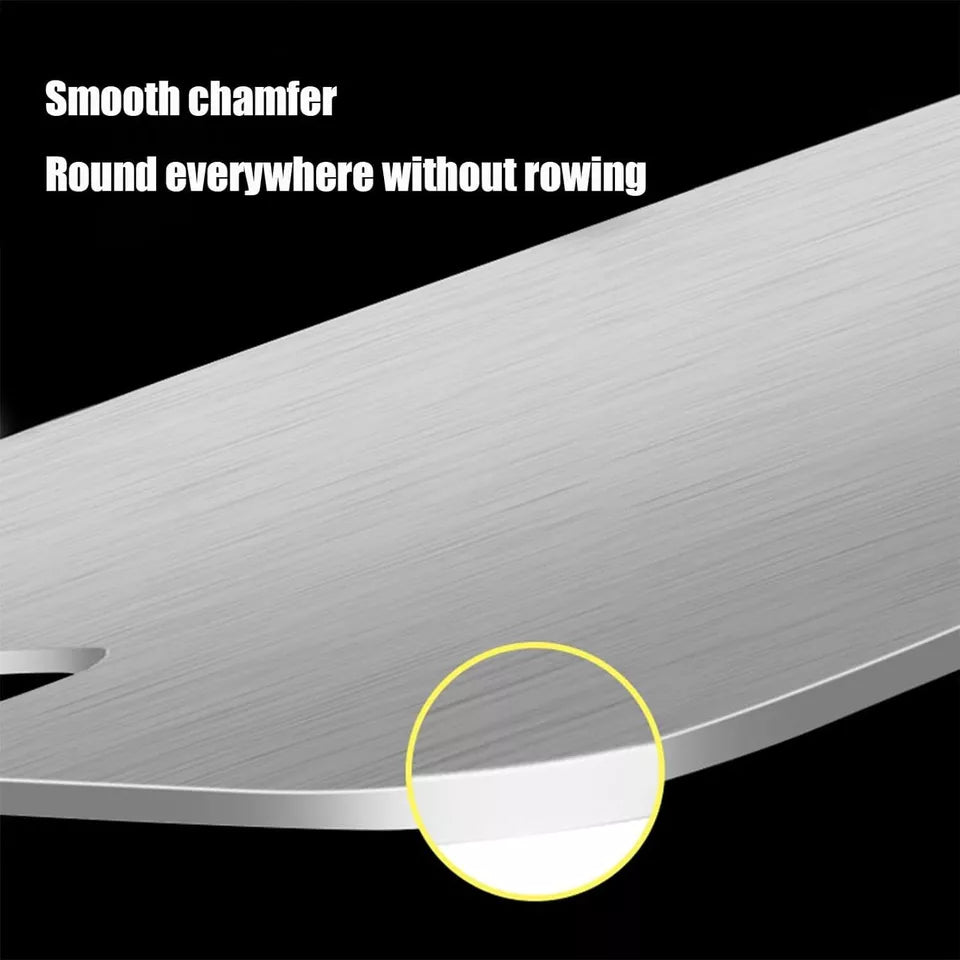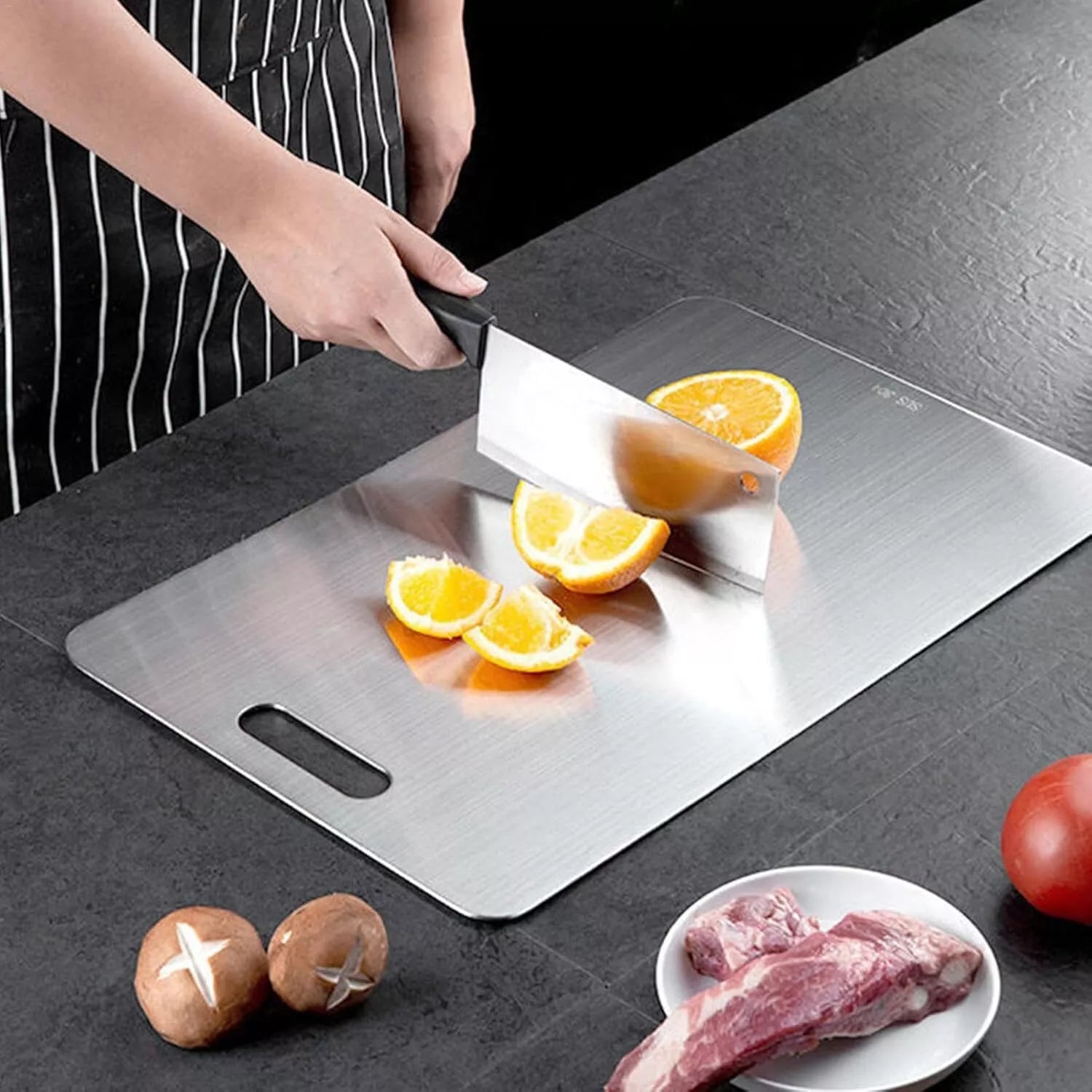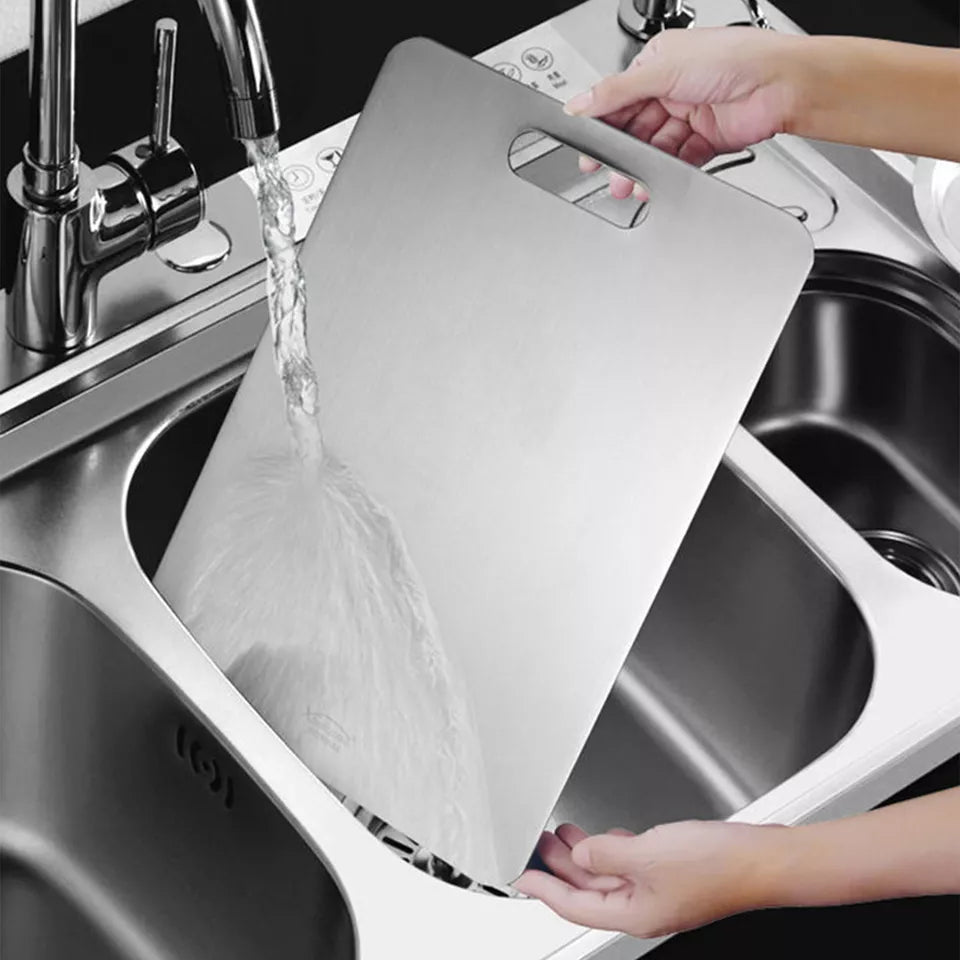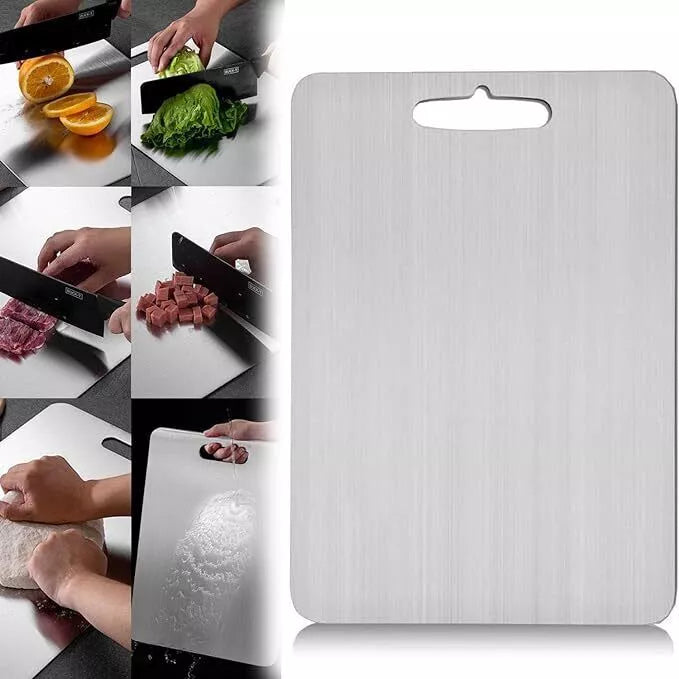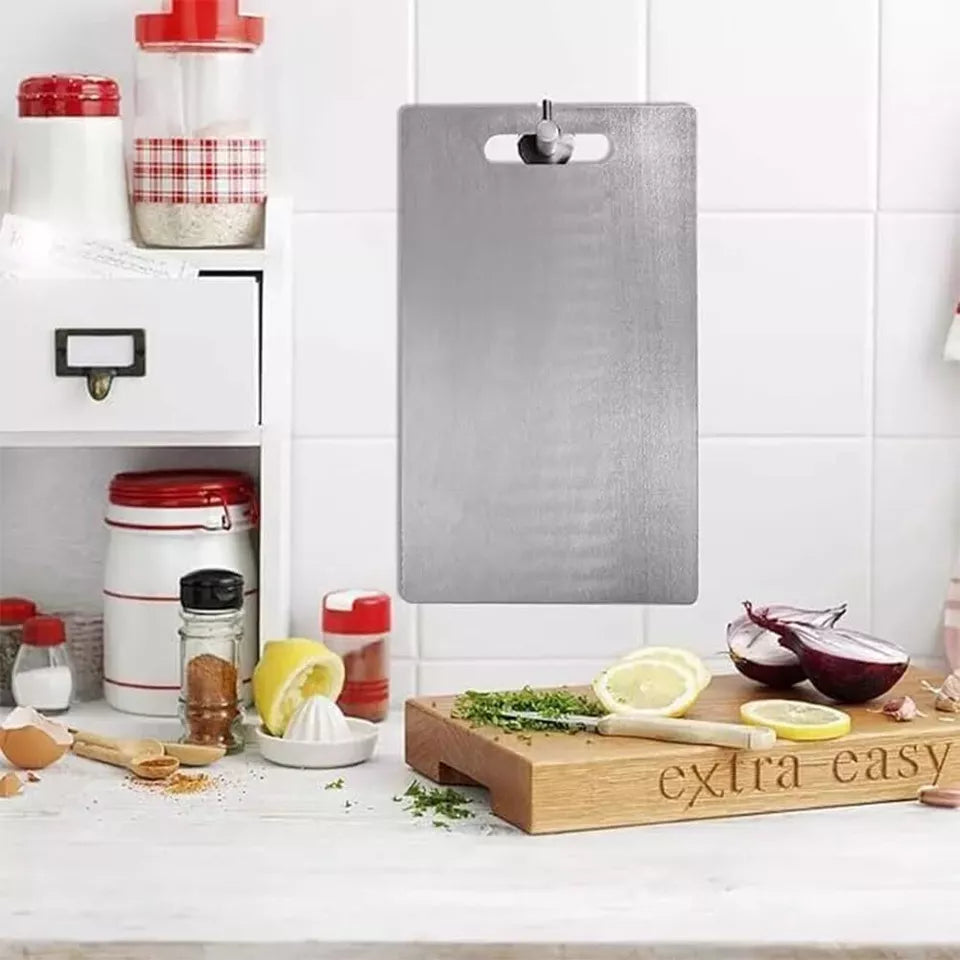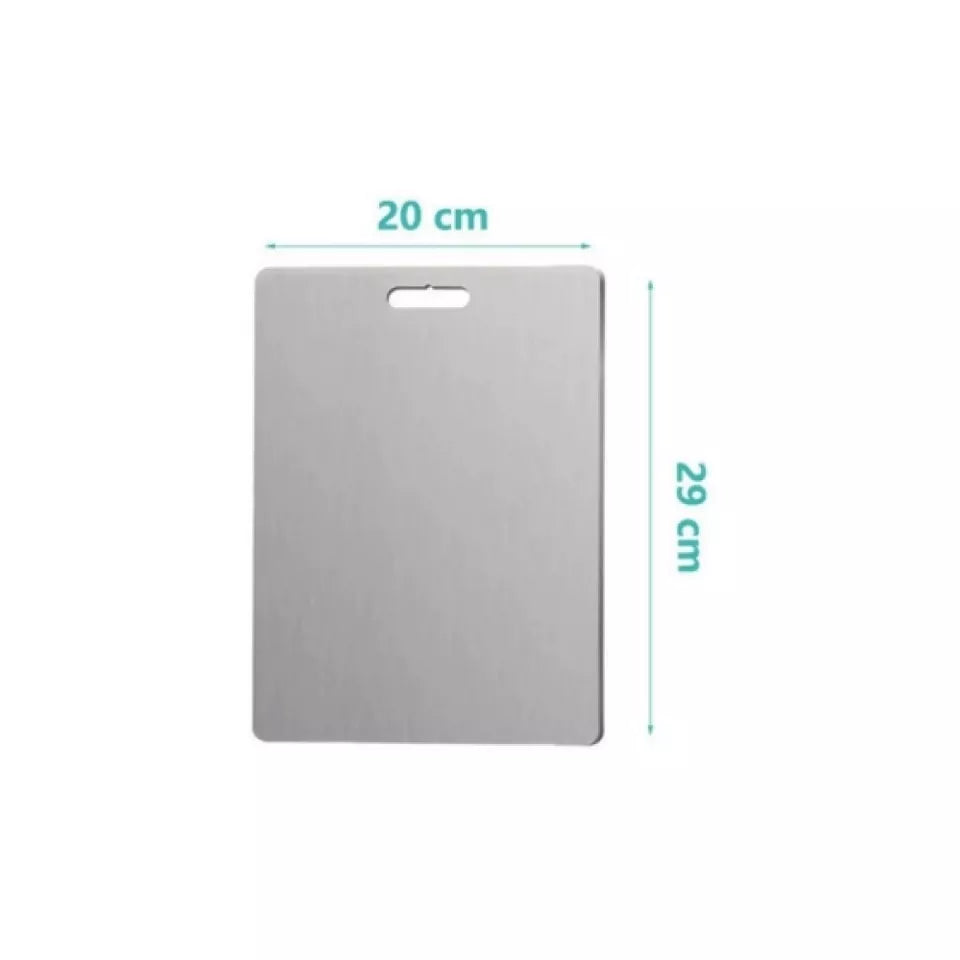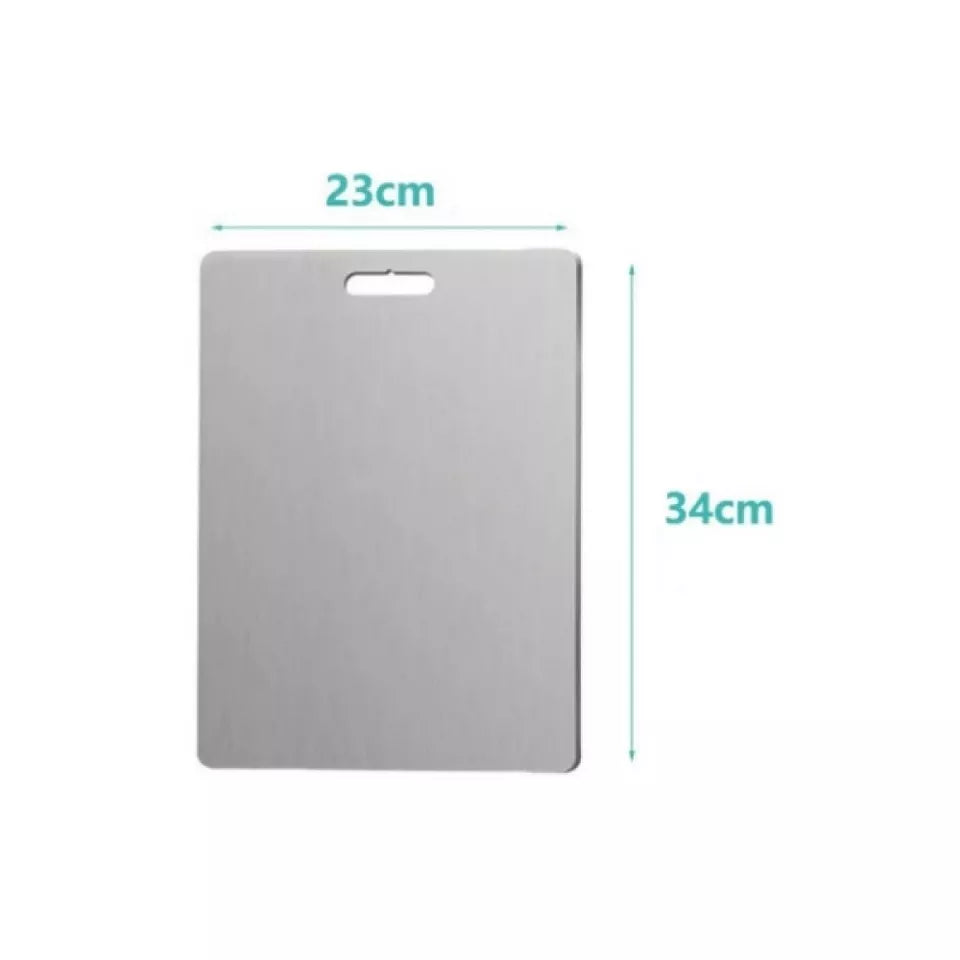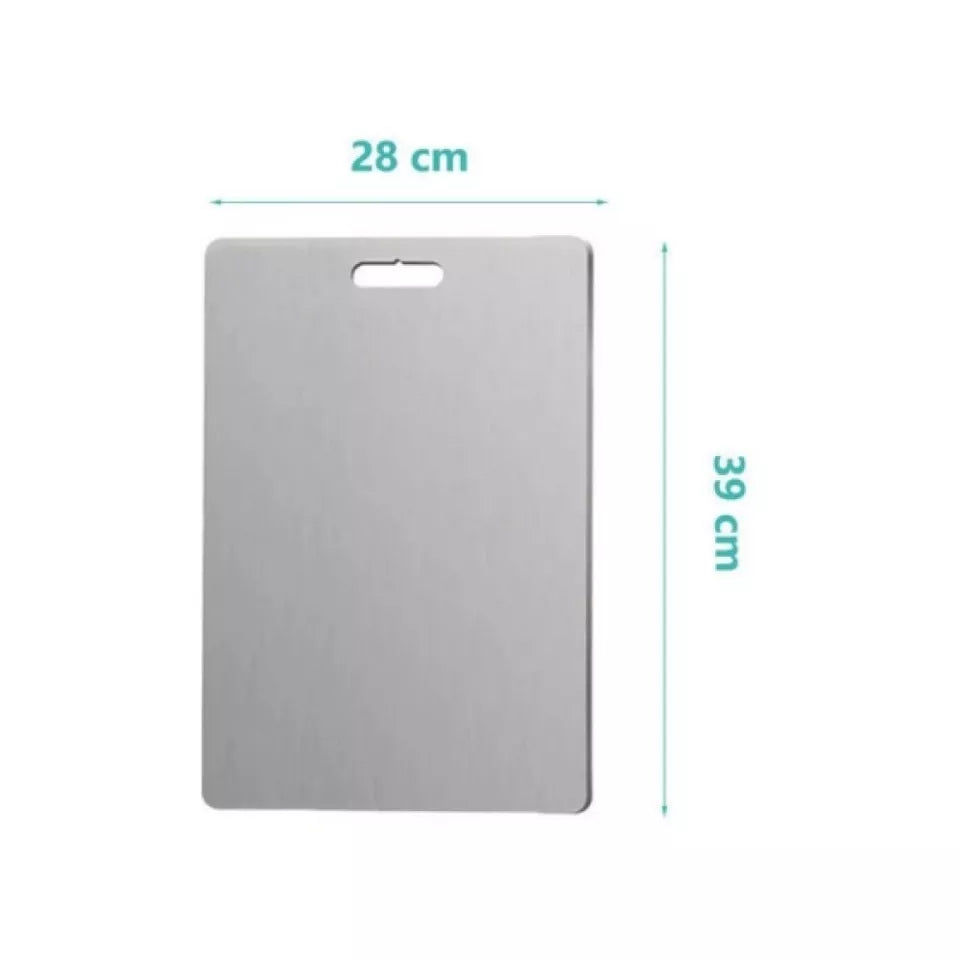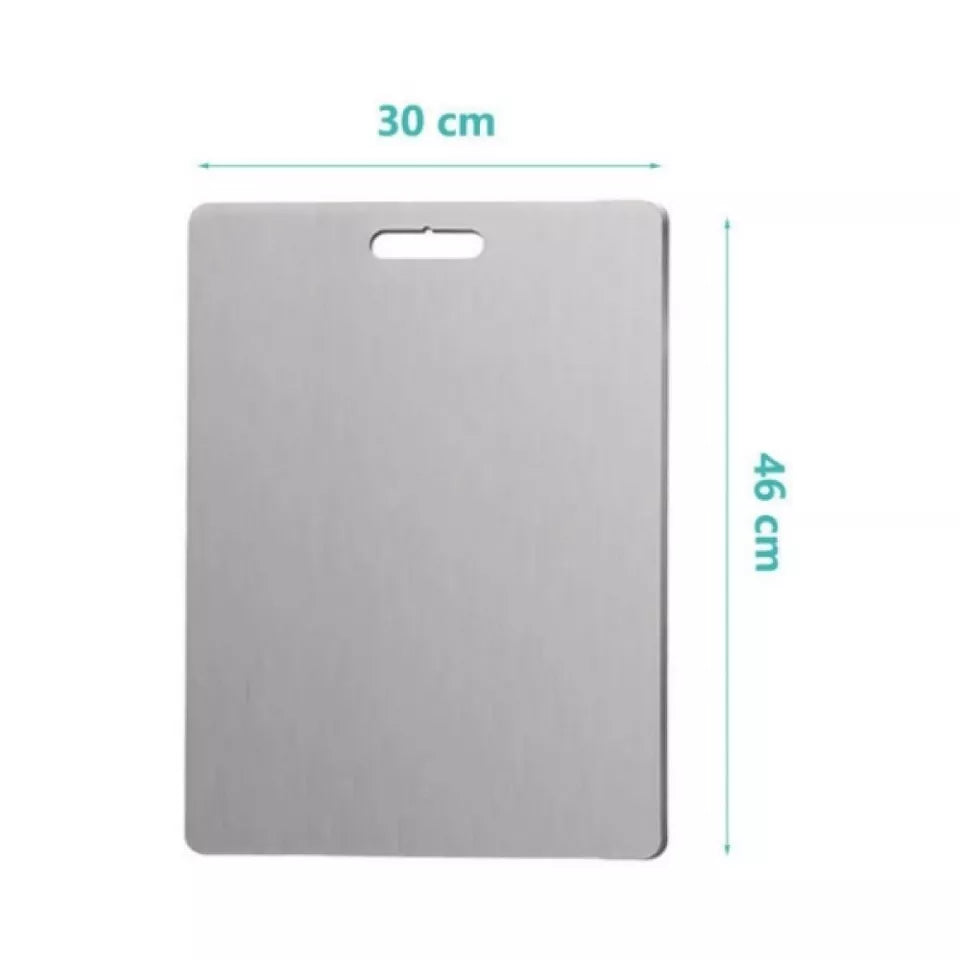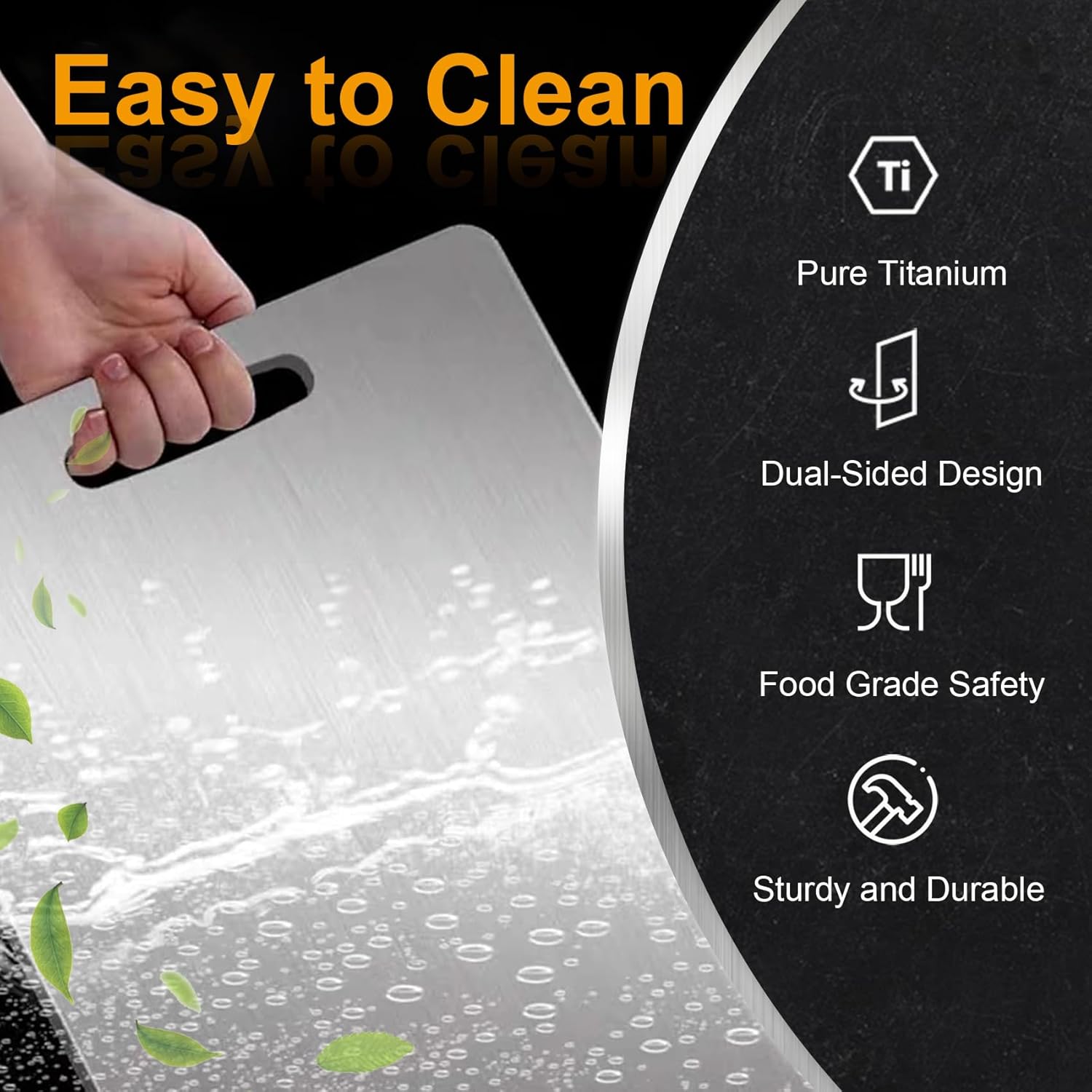Titanium Cutting Board: The Ultimate Guide to Modern Kitchen Innovation
Are titanium cutting boards worth it in Australia for home cooks or chefs? Yes, titanium cutting boards are revolutionising kitchens across Australia. They're ultra-durable, hygienic, and gentle on knives—resisting bacteria, odours, and deep grooves. Ideal for anyone seeking a long-lasting, low-maintenance upgrade over wood or plastic boards.
Are you tired of replacing worn-out cutting boards every few months? Do you worry about bacteria lurking in the grooves of your wooden board? The search for the perfect cutting board can feel endless, but titanium cutting boards are changing the game for home cooks and professional chefs alike. In this comprehensive guide, we'll explore everything you need to know about titanium cutting boards—from their unique properties to practical benefits and honest limitations.
Titanium cutting boards represent a significant shift in kitchen tool innovation. Unlike traditional materials that deteriorate quickly, titanium offers exceptional durability while addressing many common cutting board concerns. But are they truly worth the investment? Let's dive deep into the world of titanium cutting boards to help you make an informed decision for your kitchen.
What Is a Titanium Cutting Board?
A titanium cutting board is a food preparation surface made from high-grade titanium metal. Titanium is renowned for its remarkable strength-to-weight ratio, making it a popular choice in aerospace, medical, and now culinary applications. These cutting boards typically feature a sleek, metallic appearance with a non-porous surface that sets them apart from traditional wooden or plastic alternatives.
Pure titanium cutting boards are made from food-grade titanium that's been precision-crafted into a flat, smooth surface ideal for food preparation. The material itself is naturally inert, meaning it doesn't react with food acids or transfer any metallic taste to your ingredients. Most titanium boards feature a brushed finish that provides some texture for knife grip without excessive slipperiness.
It's worth noting that not all "titanium" cutting boards on the market contain pure titanium. Some may be titanium-coated or titanium-alloy products. For the full benefits of a titanium cutting board, look for those certified to contain high-purity titanium (typically 99% or higher).
The Science Behind Titanium Cutting Boards
Understanding the scientific properties of titanium helps explain why it performs so well as a cutting board material:
Hardness and Durability
Titanium has a Mohs hardness rating of 6, which is significantly harder than wood (1-3) or plastic (2-3), but importantly, it's softer than the steel used in most kitchen knives (7-8). This balance means titanium is durable enough to withstand daily use without excessive wear, yet gentle enough not to damage knife edges—a common concern with other metal surfaces.
Non-Porous Structure
Unlike wood, which contains microscopic pores that can harbor bacteria and absorb liquids, titanium is completely non-porous. This property makes titanium cutting boards inherently more hygienic, as bacteria cannot penetrate the surface and liquids remain on top rather than being absorbed.
Thermal Conductivity
Titanium has relatively low thermal conductivity compared to other metals, meaning it doesn't transfer heat as readily. This property makes titanium cutting boards comfortable to use, as they won't become excessively cold or hot during food preparation.
Corrosion Resistance
One of titanium's most valuable properties is its exceptional resistance to corrosion. Even when exposed to acidic foods like tomatoes, citrus, or vinegar, titanium remains stable and doesn't deteriorate or react. This resistance contributes significantly to the longevity of titanium cutting boards.
Benefits of Titanium Cutting Boards
Titanium cutting boards offer several distinct advantages that make them increasingly popular in modern kitchens:
Exceptional Durability
Perhaps the most compelling reason to choose a titanium cutting board is its outstanding durability. Unlike wooden boards that can crack, warp, or develop deep grooves over time, or plastic boards that quickly accumulate knife marks, titanium boards maintain their integrity through years of daily use. This longevity makes them a cost-effective choice despite their higher initial investment.
Superior Hygiene
Food safety is paramount in any kitchen, and titanium cutting boards excel in this area. Their non-porous surface prevents bacteria from penetrating and multiplying, significantly reducing the risk of cross-contamination. Unlike wooden boards that can harbor pathogens in their grain or plastic boards that develop hard-to-clean knife grooves, titanium boards provide a consistently sanitary surface for food preparation.
Easy Maintenance
Maintaining a titanium cutting board couldn't be simpler. They're dishwasher safe, though hand washing with warm soapy water is typically all that's needed. There's no need for special oils, conditioning treatments, or complex sanitizing procedures. This ease of care makes titanium boards particularly appealing for busy households and professional kitchens alike.
Knife-Friendly Surface
Contrary to what you might expect from a metal surface, quality titanium cutting boards are designed to be gentle on knife edges. The specific hardness of food-grade titanium allows it to withstand cutting pressure without causing excessive dulling of knife blades. While no cutting surface is completely free from impact on knife sharpness, titanium offers a reasonable balance between durability and knife preservation.
Odor and Stain Resistance
Anyone who has used a wooden or plastic cutting board knows the frustration of lingering odors and stubborn stains. Titanium's non-porous, non-reactive surface doesn't absorb food odors or discolor from contact with ingredients like berries, turmeric, or beets. This resistance keeps your cutting board looking and smelling fresh, even after preparing strongly flavored or pigmented foods.
Versatility
Titanium cutting boards offer remarkable versatility in the kitchen. Beyond chopping and slicing, they can serve as elegant serving platters, cooling racks for hot pans, or even as impromptu pastry surfaces. Their heat resistance allows them to handle warm cookware without damage, expanding their utility beyond traditional cutting board functions.
Potential Drawbacks of Titanium Cutting Boards
While titanium cutting boards offer numerous benefits, they're not without limitations. A balanced assessment should consider these potential drawbacks:
Higher Initial Cost
Quality titanium cutting boards represent a significant upfront investment compared to wooden or plastic alternatives. Prices typically range from $80 to $200 depending on size and quality, which may be prohibitive for some budgets. However, their exceptional longevity often makes them more economical in the long run when compared to repeatedly replacing less durable options.
Weight and Feel
Though titanium is lighter than many metals, titanium cutting boards are generally heavier than plastic and some wooden boards. This additional weight can be an advantage for stability during heavy chopping tasks but may be less convenient for frequent moving or storage. Some users also note that the feel of cutting on metal differs from the traditional experience of wood, which can take some adjustment.
Noise Level
Cutting on a titanium surface produces more noise than cutting on wood or plastic. The metallic sound can be noticeable, especially during vigorous chopping. Some manufacturers address this by incorporating noise-dampening features or recommending the use of silicone mats underneath for quieter operation.
Surface Hardness Concerns
While quality titanium cutting boards are designed to be knife-friendly, they are still harder than traditional cutting surfaces. Some professional chefs and knife enthusiasts remain cautious about potential long-term effects on premium knife edges. Using appropriate cutting techniques and avoiding excessive force can help mitigate any impact on knife sharpness.
Temperature Sensitivity
Though titanium has lower thermal conductivity than many metals, titanium cutting boards can still become uncomfortably cold in chilly environments or warm when exposed to heat. This temperature sensitivity may affect comfort during extended food preparation sessions in extreme temperature conditions.
Titanium vs. Other Cutting Board Materials
Understanding how titanium compares to traditional cutting board materials helps put its benefits and limitations in context:
Titanium vs. Wood
Wooden cutting boards have been kitchen staples for centuries, valued for their knife-friendly surfaces and traditional aesthetic. However, they require regular maintenance with mineral oil, can harbor bacteria in their grain, and are susceptible to warping, cracking, and staining. Titanium boards offer superior durability, hygiene, and maintenance-free convenience, though they lack the traditional warmth and feel of wood.
Titanium vs. Plastic
Plastic cutting boards are affordable and dishwasher-safe, making them popular in many kitchens. Unfortunately, they quickly develop knife grooves that harbor bacteria and need frequent replacement. Titanium boards provide dramatically improved longevity and hygiene, eliminating concerns about microplastic particles in food, though at a higher initial cost.
Titanium vs. Bamboo
Bamboo cutting boards offer an eco-friendly alternative with moderate durability and natural antimicrobial properties. However, they can be harder on knife edges than traditional hardwoods and still require regular oiling to prevent drying and cracking. Titanium boards last significantly longer without maintenance, though they lack bamboo's renewable material benefits.
Titanium vs. Glass or Stone
Glass and stone cutting boards are non-porous and easy to clean but notorious for dulling knife edges quickly. Titanium provides similar hygiene benefits while being much gentler on knives, making it a superior choice for those who value both sanitation and knife preservation.
How to Choose the Right Titanium Cutting Board
If you're considering investing in a titanium cutting board, these factors will help you select the right one for your needs:
Purity and Certification
Look for boards made from high-purity titanium (99% or higher) with proper food-grade certification. Reputable manufacturers will provide information about material composition and safety testing. Be wary of vague descriptions that might indicate titanium-coated products rather than solid titanium construction.
Size and Thickness
Titanium cutting boards come in various sizes to suit different kitchen needs. Standard sizes range from 12"×8" (suitable for small tasks) to 18"×12" (ideal for larger preparation jobs). Thickness matters too—boards should be at least 0.8mm thick to provide adequate stability and durability without excessive weight.
Edge and Corner Design
Quality titanium boards feature smoothly finished edges and corners that prevent discomfort during use and reduce the risk of scratches or cuts during handling. Some designs incorporate rounded corners or silicone edge guards for additional safety and comfort.
Surface Texture
The ideal titanium cutting board has a slightly textured surface that provides some grip for foods and knives without being rough enough to trap food particles. A brushed or matte finish typically offers the best balance between functionality and ease of cleaning.
Additional Features
Consider whether you'd benefit from features like juice grooves (to contain liquids from fruits or meats), integrated handles for easy transport, or non-slip feet or backing to enhance stability during use. These details can significantly improve the functionality of your cutting board.
Caring for Your Titanium Cutting Board
One of the major advantages of titanium cutting boards is their minimal maintenance requirements. Follow these simple guidelines to keep your titanium cutting board in optimal condition:
Daily Cleaning
After each use, wash your titanium cutting board with warm water and mild dish soap. Unlike wooden boards, there's no risk of water damage or warping, so thorough rinsing is perfectly safe. Dry with a clean towel or allow to air dry completely before storing.
Dealing with Stubborn Residue
For sticky or stubborn food residue, a gentle scrub with a non-abrasive sponge is usually sufficient. For more persistent issues, a paste of baking soda and water applied with a soft cloth can help remove residue without scratching the surface.
Sanitizing
While titanium's non-porous surface naturally resists bacterial growth, periodic sanitizing is still good practice, especially after preparing raw meat or fish. You can safely use diluted bleach solution (1 tablespoon of bleach per gallon of water), hydrogen peroxide, or commercial sanitizing sprays without concern for material damage.
Storage Recommendations
Store your titanium cutting board in a dry, upright position to allow air circulation and prevent potential scratches from stacking with other kitchen tools. Many titanium boards include hanging holes for convenient vertical storage, which saves counter and cabinet space.
Frequently Asked Questions About Titanium Cutting Boards
Are titanium cutting boards safe for food preparation?
Yes, food-grade titanium is completely safe for food preparation. It's non-toxic, non-reactive, and doesn't leach any harmful substances into food. In fact, titanium is so biocompatible that it's used in medical implants and surgical instruments.
Will a titanium cutting board dull my knives?
Quality titanium cutting boards are designed to be relatively gentle on knife edges. While no cutting surface is completely free from impact on knife sharpness, titanium's specific hardness makes it less damaging than materials like glass, granite, or stainless steel. Using proper cutting techniques and avoiding excessive force will help preserve your knife edges.
Can I put my titanium cutting board in the dishwasher?
Yes, titanium cutting boards are dishwasher safe. However, hand washing is typically sufficient and may help preserve the board's finish over time. If using a dishwasher, place the board securely to prevent movement that could damage other items.
How long do titanium cutting boards last?
With proper care, a quality titanium cutting board can last decades or even a lifetime. The material doesn't deteriorate, warp, crack, or develop deep grooves like other cutting board materials, making it an exceptionally durable kitchen investment.
Are titanium cutting boards worth the cost?
While titanium cutting boards represent a higher initial investment than wood or plastic alternatives, their extraordinary longevity often makes them more economical in the long run. When you consider that you might replace a plastic cutting board several times a year or a wooden board every few years, the one-time purchase of a titanium board becomes more attractive.
Conclusion: Is a Titanium Cutting Board Right for You?
Terra Wellness Titanium cutting boards offer a compelling combination of durability, hygiene, and low maintenance that makes them an excellent choice for many kitchens. Their non-porous surface eliminates concerns about bacterial contamination, while their exceptional longevity means you'll likely never need to replace them.
However, they're not necessarily the perfect choice for everyone. If you're on a tight budget, strongly prefer the traditional feel of wood, or are particularly concerned about knife edge preservation, you might want to consider other options or perhaps maintain multiple cutting boards for different purposes.
Ultimately, the decision comes down to your specific cooking habits, preferences, and priorities. For those who value long-term durability, minimal maintenance, and superior hygiene, a titanium cutting board represents a worthwhile investment in your kitchen arsenal that will serve you well for years to come.
Whether you're a professional chef or a home cooking enthusiast, understanding the unique properties and benefits of titanium cutting boards allows you to make an informed choice about this innovative kitchen tool. As with any significant kitchen investment, consider your specific needs and cooking style to determine if a titanium cutting board deserves a place in your culinary workspace.
Use code BLOG20 to save 20% today on our premium hygienic chopping boards, with free shipping Australia-wide. [Shop Hygienic Chopping Boards ➜]
FAQs About Titanium Cutting Boards (Australia)
Q1: What are the benefits of titanium cutting boards in Australia?
A: Titanium boards offer unmatched durability, food safety, and hygiene. Their non-porous, corrosion-resistant surface makes them perfect for Australian kitchens focused on health and longevity.
Q2: Are titanium cutting boards safe for food preparation?
A: Absolutely. Food-grade titanium is non-toxic, non-reactive, and won’t transfer taste or chemicals to food—making it one of the safest materials available.
Q3: Will titanium cutting boards damage my kitchen knives?
A: No, not if used properly. Titanium is softer than knife steel, so it offers a balance between durability and knife preservation, unlike glass or stone boards.
Q4: Are titanium cutting boards dishwasher safe?
A: Yes. They can go in the dishwasher, but most users simply hand wash them with warm water and mild soap—thanks to the smooth, easy-to-clean surface.
Q5: Is a titanium cutting board worth the cost for Australian households?
A: While the upfront price is higher, their decades-long lifespan, hygiene benefits, and knife-friendly surface make them a smart, long-term investment for Australian home cooks.
For further information please refer to:
Titanium Cutting Board: The Ultimate Guide to Modern Kitchen Innovation
Are Titanium Cutting Boards Good? Pros, Cons & Everything You Need to Know







